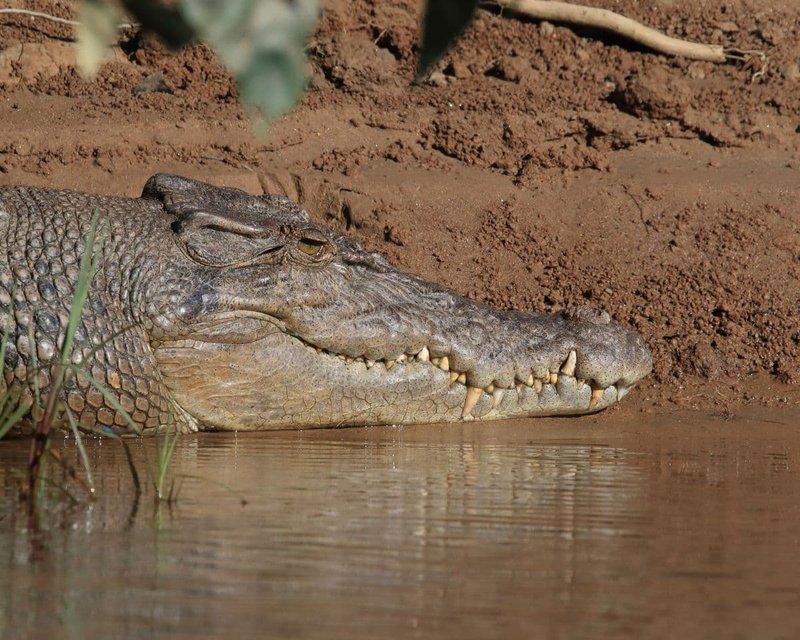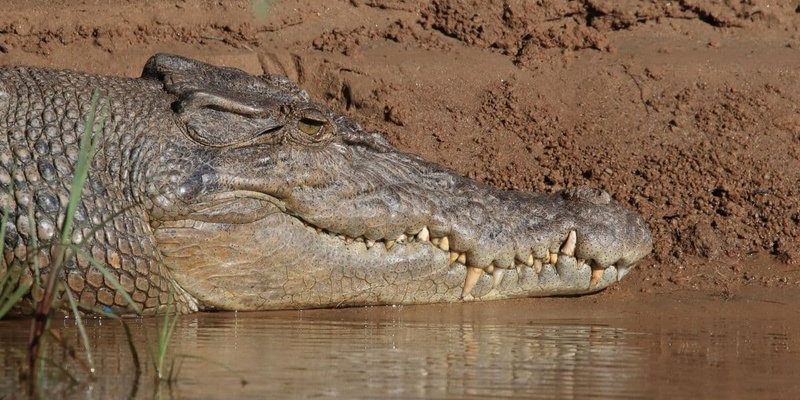
Think of crocodiles as the wild architects of their watery homes. Without them, ecosystems could become unbalanced, affecting everything from fish populations to plant life along riverbanks. In a way, they’re not just surviving in their habitats; they’re actively shaping them. Let’s dive deeper into the role of the crocodile in its natural habitat, exploring how these remarkable creatures fit into the larger picture of their ecosystems.
Crocodiles as Apex Predators
Crocodiles are considered apex predators, which means they sit at the top of their food chain. This is crucial for maintaining healthy ecosystems. By hunting and feeding on various animals, these reptiles help control populations of other species. Without their presence, certain prey species could overpopulate, leading to a cascade of issues.
For instance, if crocodile numbers decline, fish populations may rapidly explode. This overabundance can deplete vegetation, ultimately disrupting the entire aquatic ecosystem. So, by keeping fish numbers in check, crocodiles help maintain a balance that supports a diverse range of life in their habitats.
You might be wondering, what do crocodiles eat? They primarily consume fish, birds, and mammals, often lurking just below the water’s surface until their prey wanders too close. Their hunting strategy is nothing short of remarkable—silent, stealthy, and incredibly effective. With their powerful jaws, they can snap shut with enough force to crush bones, making quick work of their meals.
Habitat Modification and its Importance
Crocodiles don’t just hang out; they actively shape their environment. Their nesting habits, for example, create critical habitats for other species. When female crocodiles build nests, they dig into the sandy banks, not only for their eggs but also to provide a safe haven for the young once they hatch. These nesting sites can become essential breeding grounds for various birds and other wildlife.
Moreover, when crocodiles bask in the sun, they create depressions in the soil. These areas can fill with rainwater, turning into small pools that support a variety of plant and animal life. These changes might seem small, but they have a ripple effect, fostering biodiversity within their surroundings.
Think about it: crocodiles are like the gardeners of their ecosystems, promoting the growth of various species through their natural behaviors. Without them, the landscape would lack the variety of life that makes it vibrant and resilient.
Crocodiles’ Role in Nutrient Cycling
Crocodiles contribute significantly to nutrient cycling in their habitats. When they catch prey, they often consume only part of it, leaving leftovers behind. These remains become a food source for scavengers, such as birds or even smaller mammals. This process not only supports these scavenger species but also enriches the soil and water around the crocodile’s territory.
As these nutrients break down, they feed plants and microorganisms, which are vital for the ecosystem’s health. This cycle illustrates how interconnected life is within these habitats. So the next time you see a crocodile, remember: they’re not just fearsome hunters; they’re also key players in the nutrient game.
Impact on Aquatic Ecosystems
Crocodiles are often found in freshwater habitats, such as rivers, lakes, and wetlands, where they exert incredible influence over the aquatic ecosystem. By preying on fish and other aquatic animals, they help maintain a balance that can prevent overgrazing of vegetation in these environments.
When fish populations are kept in check, it encourages the growth of aquatic plants. These plants are crucial for stabilizing riverbanks, reducing erosion, and providing habitat for countless insects and birds. In essence, crocodiles keep the food web intact, ensuring that plants, fish, and birds all thrive together.
It’s fascinating to think of crocodiles as nature’s gardeners, with their feeding habits allowing for a balanced coexistence among various species. Without them, the entire ecosystem could shift, leading to fewer plants and, ultimately, fewer animals.
Human-Crocodile Interactions
The relationship between humans and crocodiles can be complicated. While crocodiles are essential to their ecosystems, they can also pose a risk to humans living nearby. As more development encroaches on their habitats, conflicts can arise. Crocodiles are often portrayed as dangerous, but it’s important to remember that they’re just trying to survive, much like us.
Conservation efforts are crucial not only for the crocodiles’ survival but also for maintaining the health of their ecosystems. Protecting their habitats allows wildlife populations to flourish and ensures that the natural balance remains intact. By learning to coexist with these ancient reptiles, we can appreciate their role in the environment without fear.
Education is vital in helping people understand that crocodiles are not just predators; they are important components of their ecosystems. Promoting awareness can lead to better practices in wildlife management and conservation, ultimately benefiting both humans and crocodiles alike.
The Future of Crocodiles in Their Ecosystem
As climate change and habitat destruction continue to impact the planet, the future of crocodiles and their ecosystems hangs in the balance. Crocodiles are resilient creatures, but their habitats are vulnerable. Wetlands are being drained, rivers are altered, and pollution is becoming a growing issue.
Conservation efforts are more important than ever. Protecting wetlands, restoring habitats, and creating awareness about the ecological role of crocodiles can make a significant difference. We all have a role to play in ensuring these magnificent creatures continue to thrive for generations to come.
It’s a reminder that our actions have consequences. Whether it’s supporting local conservation initiatives or advocating for habitat protection, every little bit helps. Crocodiles may be fierce predators, but they deserve our respect and protection, just like every other part of the ecosystem they help support.
In conclusion, the role of the crocodile in its natural habitat is multifaceted and essential. From being apex predators to shaping their environment and contributing to nutrient cycling, they are key players in their ecosystems. Understanding their significance fosters a deeper appreciation for these animals and the delicate balance of nature they help maintain. By working towards their conservation, we not only protect crocodiles but also the myriad of life that depends on them.

